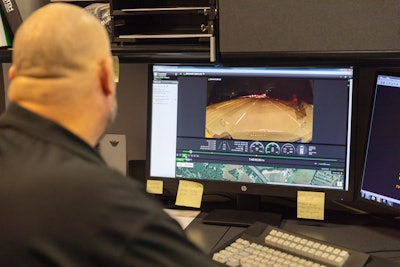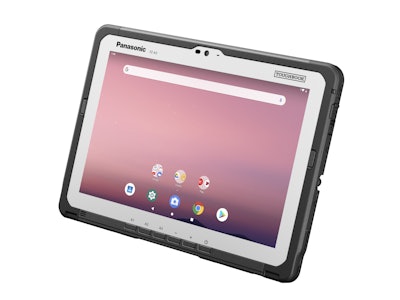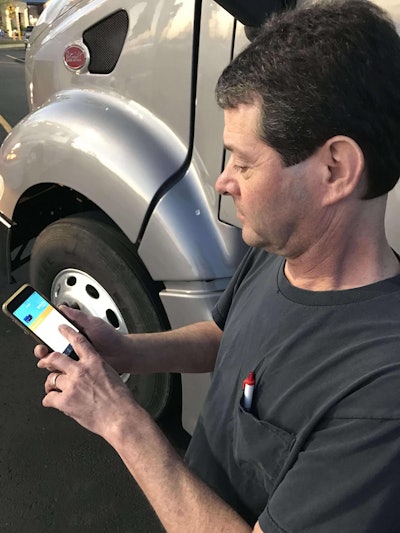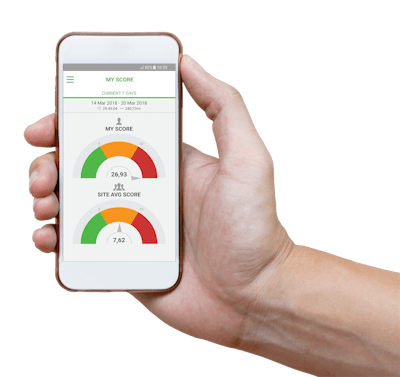
Transportation companies accelerated their digitization strategies in 2020 to solve operational challenges amid the global COVID-19 pandemic. Demand for certain technologies spiked and it soon became clear which of these trends would continue through 2021.
 Visibility tools that streamline the load planning and dispatch process will be in hot demand in 2021, predicts Jason Lewis, national sales manager of enterprise mobility for Panasonic Toughbooks.
Visibility tools that streamline the load planning and dispatch process will be in hot demand in 2021, predicts Jason Lewis, national sales manager of enterprise mobility for Panasonic Toughbooks.One area of digital focus has been getting more visibility and insights for mobile workers, assets and shipments. Fleets and logistics managers saw this need in 2020 by shifting to remote work environments that lacked the benefits of sharing information through in-person meetings and interactions.
Visibility tools that streamline the load planning and dispatch process for drivers to “get a load and go” will be in greater demand for 2021, predicts Jason Lewis, national sales manager of enterprise mobility for Panasonic’s Toughbook range of devices.
Lewis also predicts elevated demand for mobile device management (MDM) systems to ensure greater uptime for hardware, software and operating systems that fleets use to manage their assets and drivers.
MDM systems from Panasonic and many other suppliers keep operating systems and applications of mobile devices up to date, and enable proactive diagnostics and problem fixes, he said.
New subscription models could also help fleets save more money in 2021. Rather than purchase mobile devices upfront, Panasonic has rental programs that allow fleets to bypass the capital costs of mobile hardware by deploying new devices, he said, such as the Toughbook FZ-N1, during peak freight seasons and return them when no longer needed.
Zero-contact transactions
One of the biggest trends to emerge in 2020 has been the use of technology for zero-contact transactions in the supply chain. Besides protecting workers from COVID-19 transmission, the technology has created efficiencies that Lewis expects will be permanent.
“The genie is out of the bottle and is not coming back,” he said.
Zero-contact transactions will also gain new security features in 2021 to create more value and drive further technology adoption.
 Digital payment systems, like Comchek Mobile, help drivers and fleets go paperless by sending and receiving funds.
Digital payment systems, like Comchek Mobile, help drivers and fleets go paperless by sending and receiving funds.Earlier this year, Comdata enhanced the authorization controls of its fuel card to include GPS location data from integrations with fleet telematics systems. The new controls are able to compare data from a card swipe at the pump with the location of the truck in order to approve or decline fuel transactions.
Comdata also factors in the real-time fuel level data from telematics integrations to calculate the remaining capacity in the tank. The remaining capacity is used to set a purchase limit for gallons to prevent fraud from drivers selling fuel.
“The sky is the limit on that type of technology,” said Justin King, senior vice president and head of product strategy for Comdata.
As a future development, King said Comdata will have “cardless” fuel transactions via its telematics integrations. When a truck pulls up next to a fuel pump, the GPS data will confirm the location and authorize the fuel transaction for a dollar or gallon limit without the driver swiping a card.
“To me, that is where it is going to go. It is not an overnight thing. Merchant technology has to get up to speed, but there is a lot that is going on in that space,” he said.
For non-fuel transactions, Comdata has a contactless mobile payment system, Comchek Mobile. As a future development, the app could have location-based funds disbursement, King explained.
In concept, fleets or logistics providers will be able to create a geofence at facilities where trucks load or unload. When a driver crosses the boundary, the Comchek Mobile app could release funds to the driver via a Comchek or Express Code for a specified dollar amount to pay the lumper, he explained.
Greater visibility
Another area where technology will be in high demand in 2021 is to provide customers with end-to-end order visibility. Customers expect instant gratification when they order, Lewis said, and if an item is not immediately available the customer wants to know the status and track changes to the estimated time of arrival (ETA).
This expectation is not just for the delivery of consumer items but for industrial goods.
 Telematics systems will continue to score driver behaviors while adding more advancements from camera vision technology.
Telematics systems will continue to score driver behaviors while adding more advancements from camera vision technology.A building truss manufacturer, for example, will need to give its customers visibility of order status and ETAs, he said, just like e-commerce sites. “People expect that same information as they do when ordering toilet paper. They are going to expect it more and more.”
Panasonic’s clients in the trucking industry are now providing end-to-end visibility and contactless deliveries to customers using mobile devices and applications, he said. Besides using the technology to make home deliveries, fleets are able to give end customers visibility to the deliveries made to retail stores for items they ordered with an in-store pickup.
Drivers also have become an even more important customer to fleets in 2020 due to tight capacity. Fleets will be looking at technology that can provide drivers with greater conveniences and efficiency, King said.
Fleets are already pushing driver payroll and settlement funds to drivers through Comdata’s OnRoad card, for instance, but demand is rising for the OnRoad driver-facing mobile app. Fleets are using the app for a differentiated work experience, he noted. Drivers can use the app to transfer their funds between the OnRoad card and personal bank accounts.
Safety telematics
Fleet telematics was a hot item in 2020, but the main focus was on new safety features that use artificial intelligence (AI) and machine vision to detect a wider range of risky behaviors.
Whether fleets expanded or contracted in 2020, they came to rely on telematics data to understand the total cost of ownership for vehicles, but more so to ensure driver safety and compliance, said Jonathan Bates, executive vice president of marketing, MiX Telematics. Video telematics adds even more benefits.
Entering 2021, North America leads the way in global video telematics adoption with 87% of total subscriptions worldwide, yet only 5% of vehicles in North America are currently equipped with video telematics. That share will grow exponentially in 2021 now that AI is being woven into the fabric of telematics.
“[Video] is the number one request we get from customers, and we think this market will explode in 2021,” he noted.
Another telematics trend Bates expects to accelerate in 2021 is for truck OEMs to embed telematics-enabled functionality at the point of manufacture. Some OEMs, like Navistar, are letting their customers choose which telematics vendor they want to use on the software side.
“As fleets replace their vehicles with new ones – and most fleets replace a portion of vehicles every year – they’ll be able to take advantage of OEM telematics as early as 2021,” Bates said.












